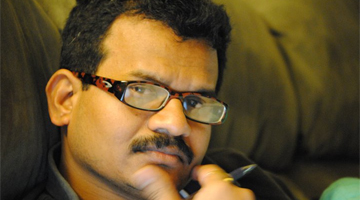Ohio University and Ohio State University are hosting a Ring Theory seminar—presented in Athens and in Columbus—featuring Ohio University alum Dr. Ashish Srivastava.
- At Ohio University: Aug. 7 from 4 to 5 p.m. in Morton 326.
- At Ohio State University: Aug. 8 from 4:30 to 5:30 p.m. in Mathematics Tower 154.
Srivastava, Associate Professor of Mathematics and Computer Science at Saint Louis University, will address “Modules invariant under automorphisms of their covers and envelopes.” His primary research interest is in Noncommutative Algebra. He is also interested in Combinatorics, Graph Theory and Applied Algebra.
Srivastava is an alum of Ohio University, having earned his Ph.D. in Mathematics in 2007 from the College of Arts & Sciences.
He is co-author of a research monograph on “Cyclic Modules and the Structure of Rings” published by Oxford University Press. He is on the editorial boards of International Journal of Algebra, the Far East Journal of Mathematical Sciences, and the European Journal of Pure and Applied Mathematics.
ABSTRACT for Ohio University: A module $M$ is called automorphism-invariant if it is invariant under automorphisms of its injective envelope. We show that a module $M$ is automorphism-invariant if and only if given any submodule $N$ of $M$, any monomorphism $f:N\rightarrow M$ can be extended to an endomorphism of $M$ and then, as a dual of it, we show that over a right perfect ring, a module $M$ is coinvariant under automorphisms of its projective cover if and only if for every submodule $N$ of $M$, any epimorphism $\varphi: M\rightarrow M/N$ can be lifted to an endomorphism of $M$.
ABSTRACT for Ohio State: In this talk, he will discuss the general theory of modules that are invariant under automorphisms of their envelopes and covers. Then he will apply these results to specific cases like injective envelopes, pure-injective envelopes, cotorsion envelopes, projective covers, or flat covers, and show how these results extend and provide a much more succinct and clear proofs for various results existing in the literature. He also will discuss how the results follow from some key observations on the additive unit structure of von Neumann regular rings.




















Comments